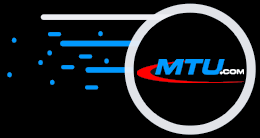The Original and Still #1
Karaoke Software!
Christmas Specials!
All Software on Sale!
35% Off ALL Software!
Coupon Code: XMAS252
Audio workstations have a core way they are designed to access audio samples from the storage media, process these samples and display the results to the user. As technology has evolved with faster computers and cheaper hard drives, so have the paradigms. However, many companies today still use the older paradigms of the '80s. Below are the 4 paradigms that MTU has observed and used or pioneered in our developments.
1. Text Paradigm
Believe it or not, early audio was edited by pulling the sample values into a text editor and typing in hexadecimal or ASCII numbers as edits. Early waveforms were usually displayed as "x or *" in the appropriate 20 line by 80 column display character locations.
The following are true graphic waveform editors.
2. RAM Paradigm
Early audio editors (and many today) required the entire audio file to fit into RAM. Early users would tolerate the limitations of short files in RAM just to be able to graphically see the waveform (like an oscilloscope). The graphic method is now proven to be the easiest for human operators to manipulate sound samples. However, with this paradigm, data is completely vulnerable to a crash or power loss. MTU first showed RAM based graphic waveform display in December 1978. In 1980 MTU shipped a graphic waveform audio editor, and in 1982 upgraded it to use a fiber optic light pen to draw the waveform. Interestingly, this convinced MTU staff engineers that a human could not draw a waveform and have even the remotest idea of what the drawn image would sound like when converted to samples and played!
3. RAM-Disk Paradigm
This method evolved with the need to process and play larger files than would fit in RAM. It is used today by almost every workstation vendor. This brings part of a larger disk file into RAM for editing, then destructively writes it back to disk. The disk file is open for modify with parts loaded and vulnerable in RAM. Changing the quantity of samples requires rewriting the entire file back to disk that follows the change. Elaborate schemes have evolved on the more expensive DAWs to allow multi-levels of undoing edits, but they still destructively modify the master files. When used this way, the master files can be totally erased in a computer crash or power loss. MTU first demonstrated this technique in August 1979, using ten 1 MB floppy diskettes to play Vangalis´ Chariots of Fire.
4. Disk-Vector Paradigm
MTU pioneered and is the only company using this paradigm to our knowledge. This uses RAM stored numbers (vectors) that point to sample locations in the recorded master files. The master files are never open for editing. Thus, they are never vulnerable to loss. Since starting to ship this paradigm in 1989, not one master file has been lost worldwide, proving the superiority of this paradigm.
A second advantage of this approach is now called Segment Based Automation; i.e. edits can also be vectors embedded within the file vectors. This gives the base mechanism for MTU's unique Random-Access-Editing™ where anything is adjustable at any time, in any order, without undoing anything else. A third advantage of this, when properly implemented, is that everything is instantaneous. MTU uses this advantages to back up all current edits to disk after every minute! This is never seen by the user, and gives absolute insurance even against a power loss.
The Disk-Vector paradigm is clearly the technology leader, providing every benefit that a DAW can for the user. MTU pioneered this approach in 1989 and has polished it in the Microsound product over the years since then.
